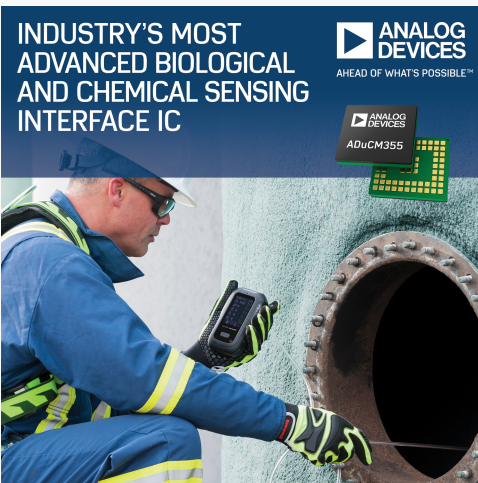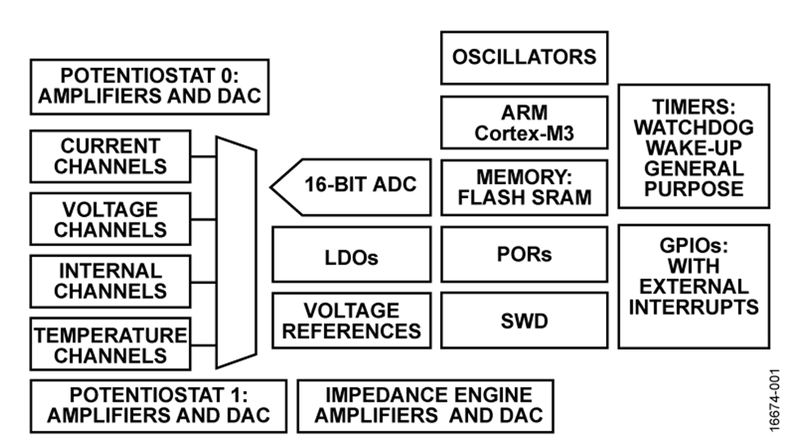By Warren Miller, contributing writer
Analog Devices Inc. (ADI) recently introduced a new sensor interface that it claims will be on the forefront of electrochemical sensory applications. The ADuCM355 precision analog microcontroller (MCU) implements both potentiostat and electrochemical impedance spectroscopy (EIS) functionality on a single chip to provide leading-edge sensor diagnostics as well as lower power consumption and noise output than its predecessors, making it more reliable, versatile, and cost-effective than other IC solutions, according to the company.

The ADuCM355 with biosensor and chemical interfaces is specifically designed for measuring and controlling chemicals and biosensors, making it well suited for industrial gas sensing, instrumentation, vital signs monitoring, and disease measurement. It features two low-power potentiostats (8.5 µA, 1.6 µVRMS ) and three or more sensor electrodes, making it the only MCU currently on the market with those specifications (according to ADI). It includes a 26-MHz core with 128 kB of flash memory and 64 kB of SRAM.
As specified in the datasheet, the analog capabilities include a 16-bit, 400-kilo-samples-per-second multi-channel successive approximation register (SAR) analog-to-digital converter (ADC) with input buffers, a built-in anti-alias filter (AAF), and a programmable gain amplifier (PGA). The current inputs include three transimpedance amplifiers (TIA) with programmable gain and load resistors for measuring different sensor types.
The analog front end (AFE) also contains two more low-power amplifiers designed specifically for potentiostat capability to maintain a constant bias voltage to an external electrochemical sensor. The noninverting inputs of these two amplifiers are controlled by on-chip dual-output digital-to-analog converters (DACs). The analog outputs include another high-speed DAC and output amplifier designed to generate an AC signal.

Looking at the block diagram of the device (shown above), the ADUCM355 isn’t stingy with other popular sensor-oriented peripherals. General-purpose timers, often used for managing data collection on a precise schedule, are available along with a watchdog timer, useful in applications in which safety and reliability are concerns. A range of communication peripherals can be configured as required in a specific application and include UART, I2 C, SPI, and GPIO ports. The GPIO, combined with the general-purpose timers, can generate a pulse-width modulation (PWM)-type output.
The ADuCM355, housed in a 6 x 5-mm, 72-pin LGA package, is priced at $5.90 in quantities of 1,000. For more information on the product, visit the ADuCM355 webpage.
Advertisement
Learn more about Electronic Products Magazine





